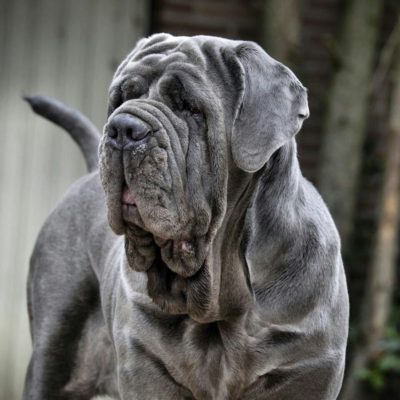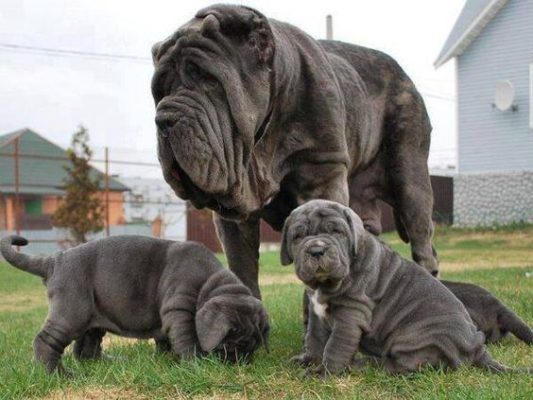Neapolitan Mastiff
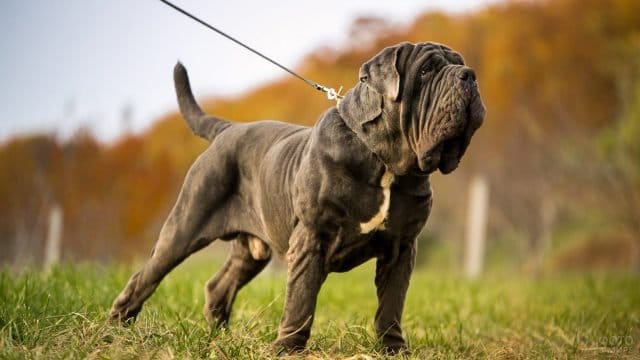
Despite its imposing appearance, the character of the Neapolitan Mastiff is malleable but partly independent. He needs a confident owner with a strong personality to raise him properly. This is a loyal and friendly dog who also wants affection and attention. Kind to visitors to the house, but at the same time is extremely wary, as he is ready at any moment to begin to protect his owner.
Table of Contents
Breed Information
| Another Name | Mastino Napoletano |
| Origin | Italy |
| Height | Males 65-75 cm Females 60-68 cm |
| Weight | 50-70 kg |
| Fur | Short |
| Color | Black, blue, gray, mahogany, isabella, tiger |
| Lifespan | 7-9 years |
| FCI Classification | Pinscher and Schnauzer – Molossoid and Swiss Mountain and Cattledogs |
| Group | Guard dogs |
| Price | From $1500 |
Breed Photos
Origin History
The Neapolitan Mastiff has been known since ancient times. This breed’s homeland is majestic Italy, where the dogs underwent their formation up to the present day. The Neapolitan Mastiff is a direct descendant of fighting dogs that participated in various battles in ancient Rome. Because of their imposing appearance and sturdy character, Mastinos were used to defend fortresses and houses in ancient times.
Undoubtedly, Neapolitan Mastiff of the past and present are similar to each other, but not the same. One should not miss the fact that the breed was continually being improved from year to year. Together with the Roman legions, the dogs toured the world, modifying and “building” their history of existence.
In antiquity and the Middle Ages, the breed was actively used as a “fighting helper”, guardian, guardian. The courageous and brave Mastiff is capable of protection and loyalty. It can and should be expected to help the owner in any difficult moment.
Unfortunately, little is known about how the breed developed in ancient times. The popularity of the species was brought by the Italian journalist Pietro Scanciani, who in 1946 visited a dog show. He was incredibly shocked by the breed’s history and appearance that he decided to dedicate an entire article to it. In the future, Scanciani was even involved in preparing to breed a single type of Neapolitan Mastiff breed. A model male dog was studied through directed selection, from which the international dog registry adopted the breed standard in 1949 and 1956 by the Fédération Cynologique Internationale (FCI). Already by 1970, the Neapolitan Mastiff became popular in Europe.
Appearance
A brutal, massive and large dog with a strong skeleton, limbs longer than average. The Mastiff has a short coat. Color varies gray, black, something average between pale and beige, tiger, blue. The constitution of the dog is strong and muscular. The square muzzle, as well as the head, has creases of varying degrees and patterns. The ears are high, hanging, and cropped. The tail is saber-shaped and thick – possible pronounced white markings on the hips, toes, and chest.
Character
Despite its imposing appearance, the character of the Neapolitan Mastiff is malleable but partly independent. He needs a confident owner with a strong personality to raise him properly. This is a loyal and friendly dog who also wants affection and attention. Kind to visitors to the house, but at the same time is extremely wary, as he is ready at any moment to begin to protect his owner. Because of his temperament and origin is tolerant of unpleasant feelings and fearless. That is why it is excellent as a reliable guardian for your home.
The Neapolitan Mastiff is exceptionally observant, and nothing will be hidden from his gaze. The dog and family members form a strong bond because the Neapolitan Mastiff is a friend who can easily protect the whole family. If we talk about Mastiff’s attitude to children, it is friendly. However, it is worth paying attention to the breed’s size to avoid unpleasant situations with young children. The level of aggression and anger towards dogs with proper training is low. The dog is calm if the owner is not threatened by anything.
The breed is better suited to be kept in a house than in any standard apartment. It makes sense that a new family member of this size needs space and room to move freely. Plus, the Neapolitan Mastiff has a rare muzzle structure with pronounced abundant salivation. This is the cause of sloppiness when eating.
Care
The Neapolitan Mastiff is not the most comfortable dog to care for. It is advisable to comb out the hair, remove excess undercoats, clean the ears, and bathe every week. It is essential to pick the right shampoo for the coat and scalp folds. The breed-specific folds should be wiped daily to avoid disease and bacteria growth because this is where the moist environment is favorable for them. Nail trimming 2-3 times a month is recommended.
Training
As for education and training, the Mastiff has no particular problems with it. The dog is intelligent, has a good memory, and will remember exactly what you require from it. However, it would help if you were a persistent owner, in this case, not to receive an absolutely uncontrollable animal. It is desirable to let the pet know from the very beginning who is in charge here.
Consider the fact that the dog will do well with commands aimed at protecting or guarding something. To train your Neapolitan Mastiff, you need desire, persistence, and the right approach. Of course, don’t forget the goodies that you can reward the dog with for his efforts.
Common Diseases
Not only does the pet of this breed have a muscular physique and health, but no one is immune to all kinds of diseases. The Neapolitan Mastiff is prone to this type of disease:
- folded dermatitis is a skin infection caused by moisture trapped in the skin folds;
- hip dysplasia;
- elbow dysplasia;
- cardiomyopathy;
- hypothyroidism;
- various forms of allergies and demodicosis;
- if you feed improperly and excessively, you are overweight.
Nutrition
Feeding such a large breed requires a balanced and nutritious diet with enough protein. Do not overdo it so as not to overfeed your pet. This will lead to harmful consequences in the form of impaired activity and health.
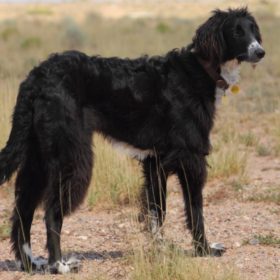 Taigan
Taigan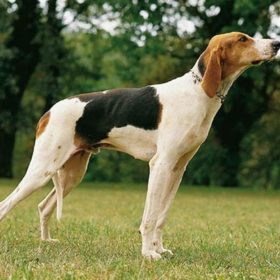 Chien Français Tricolore
Chien Français Tricolore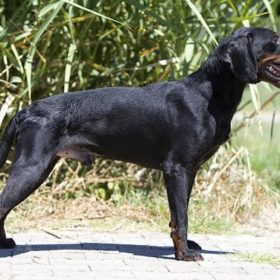 Montenegrin Mountain Hound
Montenegrin Mountain Hound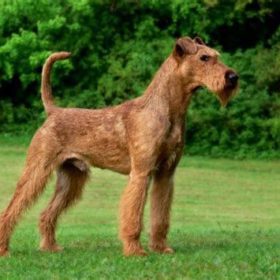 Irish Terrier
Irish Terrier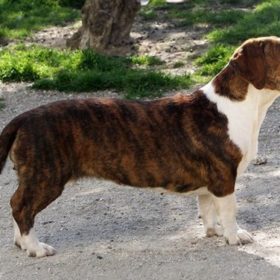 Drever
Drever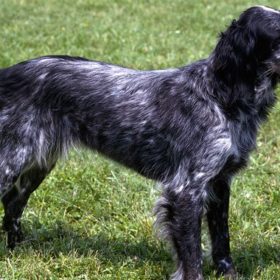 Blue Picardy Spaniel
Blue Picardy Spaniel